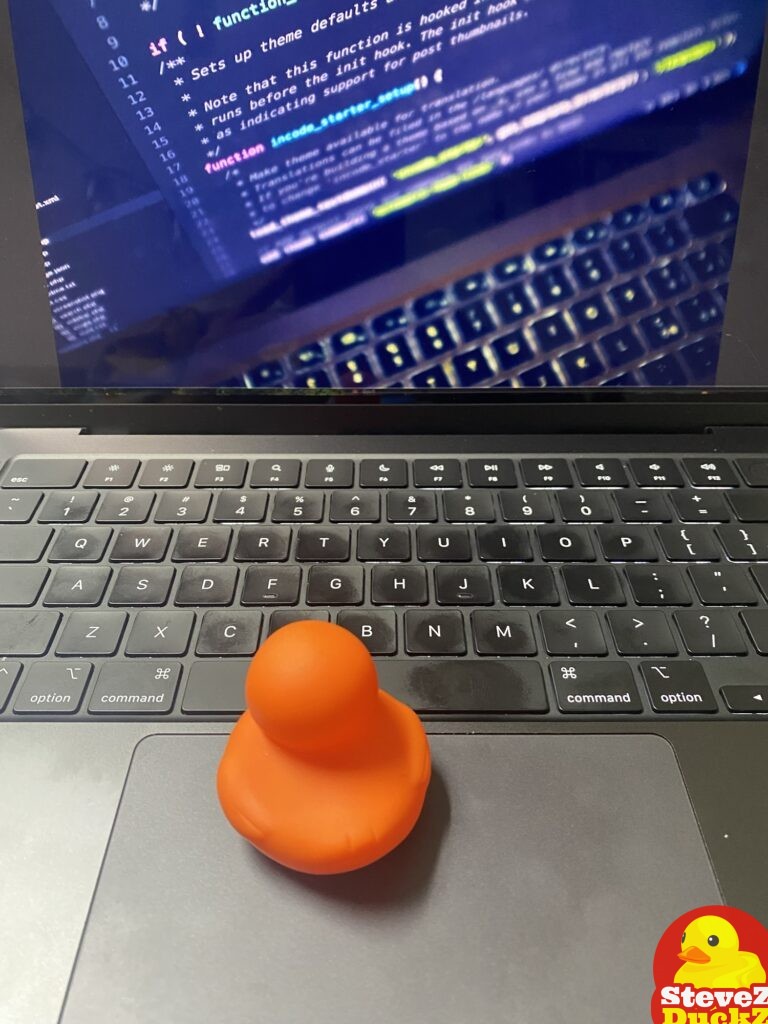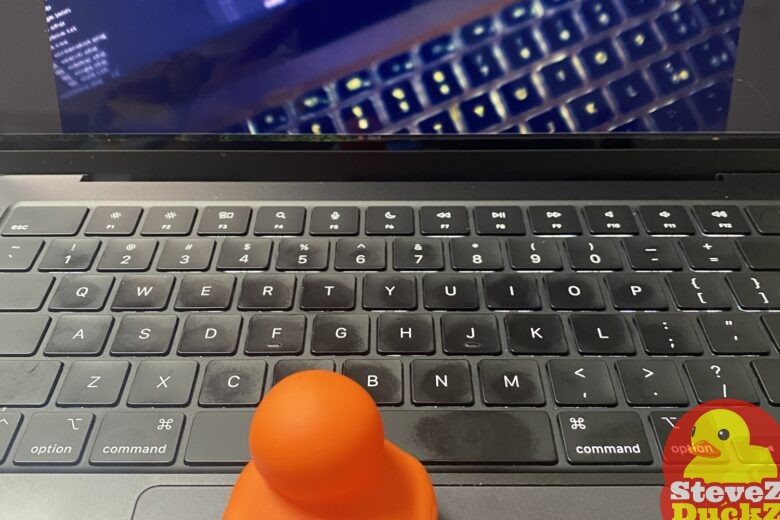Rubber Duck Debugging — We’ve all been there. Staring at a screen full of code, the cursor blinking mockingly, a bug lurking somewhere in the depths of our meticulously crafted program. Frustration mounts, coffee consumption increases, and the urge to throw the keyboard out the window becomes almost overwhelming. But before you succumb to despair, let me introduce you to a surprisingly effective technique: Rubber Duck Debugging.
Quack! Diving into the World of Rubber Duck Debugging

No, you don’t actually need a rubber duck (though it certainly adds a touch of whimsy). The core concept is simple: explain your code, line by line, to someone (or something). And that “someone” can be a rubber duck, a teddy bear, your pet goldfish, or even just an empty chair.
The orange rubber duck in this picture is VFL which is short for Vol for Life. He will be featured on a future blog post so follow to see his detail details.
The Magic Behind the Quack
You might be thinking, “How can talking to a duck possibly help me find bugs?” The magic isn’t in the duck’s insightful responses (though I’m sure they’d offer great advice if they could). The real power lies in the process of articulation.
When you explain your code aloud, you’re forced to slow down and meticulously examine each step. This process often reveals flaws in your logic that you might have overlooked when simply scanning the code. By verbalizing your assumptions and the expected behavior of each line, you’re more likely to catch inconsistencies and identify the root cause of the bug.
How to Unleash the Power of the Duck (or Equivalent)
- Find your “duck”: As mentioned, it can be anything that will passively listen. The key is to have something (or someone) to talk to.
- Describe the problem: Briefly explain the bug you’re trying to fix. What’s happening? What should be happening?
- Walk through your code: Start at the relevant section and explain each line of code as if you’re teaching it to a complete beginner. Don’t skip over anything, no matter how obvious it seems.
- Focus on the “why”: Don’t just describe what the code does, but also why you wrote it that way. Explaining your reasoning can often highlight flawed assumptions.
- Listen to yourself: As you’re explaining, pay close attention to your own words. Often, the act of articulating the problem will lead you to the solution. You might even hear yourself say something like, “Wait a minute… that doesn’t make sense!”
- Don’t be afraid to ask questions (to your duck): Even though your duck won’t answer back, asking questions like “What happens if…?” or “Is this the correct approach?” can help you think through different scenarios.
If the duck talks back well, that’s something else!
Beyond Bugs: The Broader Benefits
Rubber duck debugging isn’t just for finding bugs. It’s also a great way to:
- Improve code clarity: Explaining your code to someone else forces you to think about how well it’s structured and documented.
- Identify areas for improvement: The process of explaining your code can reveal areas where it could be more efficient or elegant.
- Solidify your understanding: Teaching something to someone else is a great way to reinforce your own understanding of the subject matter.
Quack into Action!
So, the next time you’re facing a particularly stubborn bug, grab your rubber duck (or your preferred debugging companion) and give this technique a try. You might be surprised at how effective it is. And who knows, you might even develop a close friendship with your new debugging buddy. Just remember to thank them for their invaluable assistance!
Do you do rubber duck debugging? Feel free to share about your experience in doing this in the duckie comments below.
Steve is a collector of rubber ducks. At SteveZ DuckZ, Steve will share off his rubber duck collection and share blog post relating to rubber ducks. If you love rubber ducks, please follow on social media or subscribe!
Discover more from SteveZ DuckZ
Subscribe to get the latest posts sent to your email.


